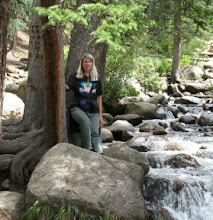 What is mysterious about Hackberry? Lots of things, it turns out. I knew it as a native shade tree, but the story is complex, as so many are once you delve into them a bit. The genus Celtis is a tangled web whose strands cross the planet. Wikipedia isn't sure how many species there are, 60 to 70 perhaps, but one or more of them is found in almost every continent and archipelago. Who knew?
What is mysterious about Hackberry? Lots of things, it turns out. I knew it as a native shade tree, but the story is complex, as so many are once you delve into them a bit. The genus Celtis is a tangled web whose strands cross the planet. Wikipedia isn't sure how many species there are, 60 to 70 perhaps, but one or more of them is found in almost every continent and archipelago. Who knew?
Mysterious identity
Hackberry once belonged to the Ulmaceae, and in its "shade tree" form makes a good substitute for American Elm. Now, however, I hear it's been placed with the Cannabaceae, with whose famous members it probably shouldn't be confused. It is a tall tree, graceful and elegant. Sometimes. And much in need of taxonomic examination.
Here's what one set of data suggests for its U.S. occurrence:

We have, perhaps, two species in Colorado. Once I would have readily said these are Celtis occidentalis L. and Celtis reticulata Torr., but the experts don't agree even on that simple point. They unite on the species C. occidentalis, the Eastern or Common Hackberry, named "western" by Linnaeus apparently as distinct from C. orientalis, an Asian species but disagree on whether it's here. They also waffle on C. reticulata, formerly C. douglasii, which some place as a subspecies of Celtis laevigata, a species confined by others to the southeastern U.S.
The Chemist is certain. He believes C. reticulata is a gnarly small native tree, and C. occidentalis is the tall, nonnative shade tree one. The latter is far more likely to be spotted, often along drainages. They are so different, he says, that they must be two distinct species; I'm inclined to agree. Take a look at the Colorado distribution (adapted from the Plants database; green being reticulata, pink C occi, and blue for both):
 (Contrariwise, NatureServe says C occi is in 40 states--but not Colorado.)
(Contrariwise, NatureServe says C occi is in 40 states--but not Colorado.)"My" hackberry, the solitary one in our yard, is an indeterminate case. I'm leaning toward C occi. The house was 12 years old when we moved in, and this tree presumably no older. Now, thirty years later, it's a bit taller but not much changed. It still looks young, without witches brooms, and without a trace of gnarliness. Was it planted from nursery stock, by former occupants? Or did it germinate from seed brought in by birds? I can only guess. It doesn't grow (much), probably because it's surviving solely on natural precipitation, but it doesn't die either. A testament to the drought hardiness and resilience of this plant.
Mysterious witches brooms
Guardian's question was about "those things" that grow on Hackberry. "Galls" I said before I got my brain in gear, and it's true that Hackberry is beset by gall-forming insects, from bud and petiole galls to the distinct nipple gall often seen on the leaves.
 "Witches brooms" is the correct answer, at least this time of year. What causes these odd growths that become the easiest and most reliable way to recognize Hackberry in winter? Turns out, scientists aren't exactly sure. Two candidates—an eriophyid mite and a fungus—vie for the honor, but the result is a characteristic of the plant that is practically diagnostic! They disfigure its winter aspect, but are barely visible in summer after the trees leaf out.
"Witches brooms" is the correct answer, at least this time of year. What causes these odd growths that become the easiest and most reliable way to recognize Hackberry in winter? Turns out, scientists aren't exactly sure. Two candidates—an eriophyid mite and a fungus—vie for the honor, but the result is a characteristic of the plant that is practically diagnostic! They disfigure its winter aspect, but are barely visible in summer after the trees leaf out.
Mysterious Hackberry Hill
In our part of Colorado, Hackberry is historical legend. Place names abound, as you'd expect; this ubiquitous genus lends its name to towns (in AZ, LA, and TX), street names, and Hills (in Las Vegas, NV, as well as TX, CT, and IN). Our Hackberry Hill is in Arvada, at about 76th and Wadsworth, has its own Wikipedia page, and is made even more famous by the nationally known elementary school (see Southern Poverty Law Center for a nice story; good for them!). But it no longer has a famous Hackberry tree.
The tree that gave its name to Hackberry Hill was, most likely, a common Hackberry, C occi, singled out for its exotic occurrence on this high spot. 'Tis said that natives and pioneers used the tree as a distant landmark, and it is believed to have sprouted from the medicine pouch of an Indian chief killed in battle and buried at this spot long ago. It was huge! But it was in the way of progress, and therefore had to be cut down. Locals rebelled, and the giant tree was to be transplanted. A trench was dug around it in preparation, but vandals intervened one night in 1937 and settled the contentious issue before the tree was salvaged.
If a plant post comes, can February's Berry-Go-Round be far behind? Look for it later today!


